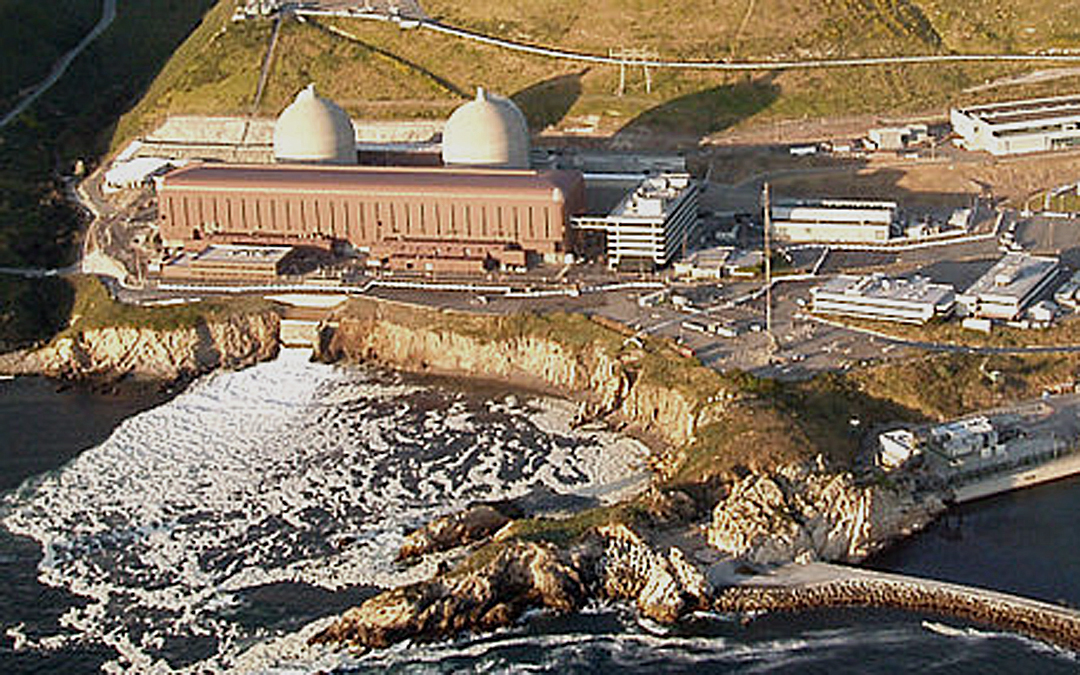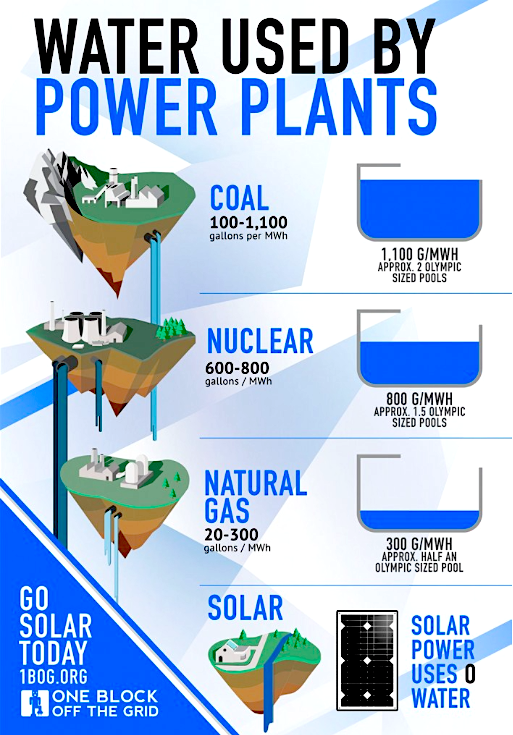What kids pick up at school can lead to wholly unanticipated consequences, as every parent knows. And no, I’m not talking about their schoolwork, I’m talking about the virus that tore through our house last week with a hurricane-force torrent and laid up Daddy for five full days (kids, of course, were fine after 24 hours….). So, sorry to miss a few days of GreenWorld, but we’re back today with a new article on Ukraine and nuclear power in Europe and a new wide-ranging Nuclear Newsreel….Lots of interesting articles to take a look at!
Nuclear Power
A new Harris poll finds that public support for nuclear power and coal has plummeted. Both technologies are seen (accurately) as dirty energy. Surprisingly though, natural gas fracking has not taken as big a hit in public opinion. But solar and wind remain–by far–the preferred energy technologies of the 21st century. Find a breakdown of the polling and many more details here.
How far do you live from a nuclear reactor? Probably too close for comfort. You can find out on this interactive website. Then, you might want to take a look at NIRS Nuclear 911 Campaign to expand and improve emergency evacuation planning at U.S. reactors–a necessary step until all reactors are closed.

Union of Concerned Scientists describes the NRC as a ‘Jekyll and Hyde’ agency. Sometimes they get it right; but often the agency lets utilities slide on safety faults. UCS is kinder to the NRC than we are, but it is valuable that they focus on the most consequential failures of the agency. And, as the article states: “But with so many American lives at stake, even a cameo appearance by the NRC’s Mr. Hyde is too much,” the UCS said. “If an earthquake near Diablo Canyon or a failure of the Jocassee Dam (upriver of South Carolina’s Oconee nuclear plant) harmed people, the NRC would be unable to look Americans in the eyes and honestly claim it had taken every reasonable measure to prevent the disaster. More Jekyll, less Hyde is this critic’s choice for the NRC’s future.”
Another plus from Germany’s Energiewende: early shutdown of nukes & coal plants. We hear frequent claims from nuclear boosters that Germany’s ongoing transition to renewables–a transition still in its infancy it should be noted–is leading to more use of coal, higher carbon emissions, and a potential need to restart closed reactors to meet electricity demand. This article states just the opposite: just as in the U.S., poor economics is actually leading to early shutdowns of coal plants and likely some nuclear reactors as well.
The nuclear shadow over Karachi: Proposed Chinese nuclear reactors threaten city of 20 million people. Excellent and thorough piece published in Newsweek on the very real threat untested Chinese reactors would have on Pakistan if built–a country with an inadequate regulatory structure and emergency plans. Great graphics too. Absolutely worth your time to read.
There may be less to Japan’s commitment to return some plutonium and highly-enriched uranium to the U.S. for non-proliferation purposes than meets the eye, reports the Center for Public Integrity. “But Japan will still have plenty of such materials in its holdings once the repatriation is completed. The plutonium alone is 3.5 percent of what Japan has in its own warehouses, and less than one percent of the country’s total holdings (some of it is stored outside the country). It also represents just 4 percent of what the country can produce in a year at its new plutonium factory, now scheduled for completion in October in the village of Rokkasho.”
Another question we have about the deal: while nuclear non-proliferation is indeed a good thing, what is the U.S. going to do with Japan’s radioactive waste when we don’t know what to do with our own?
Problems continue at Duke Energy reactors; NRC launches a special investigation at the utility’s Catawba nuclear site.
Tired of people who don’t really know what they’re talking about extol the virtues of thorium reactors? Yeah, we are too. So is Greenpeace, which published this piece setting the record straight: thorium is not “clean” nuclear power, it does generate radioactive waste, and it isn’t needed in any case.
Clean Energy
 Nuclear power and fossil fuel have a lot of disadvantages–that’s why Americans increasingly see them, as the poll referred to above indicates, as dirty energy sources. But one frequently overlooked disadvantage in an increasingly water-stressed world is their enormous use of water. The infographic to the right, prepared for last week’s World Water Day, gives an indication of just how disparate their water use is compared to clean energy sources. One complaint about the article, however, is that it says that “there are no hard data” on nuclear’s water use. Not so; check out the Water and Reactors page on NIRS website here for a lot of hard data and useful information.
Nuclear power and fossil fuel have a lot of disadvantages–that’s why Americans increasingly see them, as the poll referred to above indicates, as dirty energy sources. But one frequently overlooked disadvantage in an increasingly water-stressed world is their enormous use of water. The infographic to the right, prepared for last week’s World Water Day, gives an indication of just how disparate their water use is compared to clean energy sources. One complaint about the article, however, is that it says that “there are no hard data” on nuclear’s water use. Not so; check out the Water and Reactors page on NIRS website here for a lot of hard data and useful information.
Last week we discussed a new report from Goldman Sachs about the impact of rooftop solar power and the coming of “grid parity”–that date on which it becomes just as cheap for consumers to generate their own power, with backup storage, as it does to stay on the electrical grid. Today it’s Morgan Stanley’s turn. They agree with Goldman Sachs: grid parity could arrive in California by 2018. Tesla, and its plans for a giant new battery factor, is what makes the difference. The expected plunge in battery storage costs Tesla says it will achieve are what will make it possible. Article also includes very interesting statistics on how Tesla automobiles will themselves serve as backup power sources as the company grows. In some European countries, notably Germany, Italy, and Spain, grid parity already has been achieved.
Meanwhile, those utilities fighting the inevitable aren’t any closer to giving up–yet. This article points out there is no end in sight to the battle old-line utilities are waging against rooftop solar power. And it’s not because rooftop solar yet provides any significant amount of U.S. electricity–it doesn’t. But the utilities see its rapid expansion and the writing on the wall; rather than embrace the future, some choose to fight it. Scientific American weighs in and takes the side of solar, predicting a bright future for the technology–which is not so good news for the dinosaur utilities.
Michael Mariotte
March 25, 2014
Permalink: https://www.nirs.org/2014/03/25/nuclear-newsreel-tuesday-march-25-2014/
You can now support GreenWorld with your tax-deductible contribution on our new donation page here. We gratefully appreciate every donation of any size–your support is what makes our work possible.
Comments are welcome on all GreenWorld posts! Say your piece above. Start a discussion. Don’t be shy; this blog is for you.
If you like GreenWorld, you can help us reach more people. Just use the icons below to “like” our posts and to share them on the various social networking sites you use. And if you don’t like GreenWorld, please let us know that too. Send an e-mail with your comments/complaints/compliments to nirs@nirs.org. Thank you!
Note: If you’d like to receive GreenWorld via e-mail daily, send your name and e-mail address to nirs@nirs.org and we’ll send you an invitation. Note that the invitation will come from a GreenWorld@wordpress.com address and not a nirs.org address, so watch for it.



